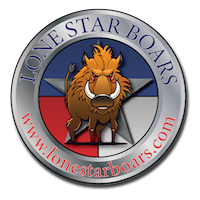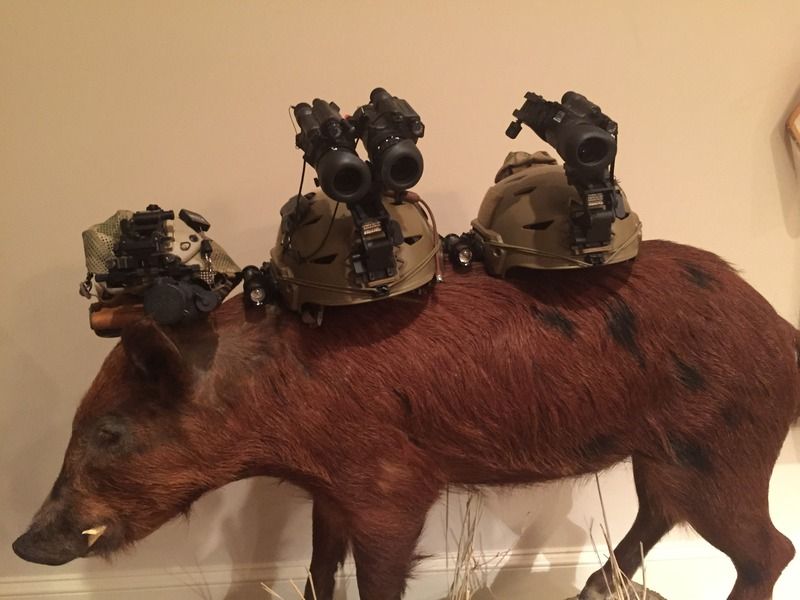My two helmets ... on the right sides of the helmets (left side as we face) are the 3 lumen red, blue, green white lights. These can be used on red, for most tasks requiring visible light and are not visible much beyond 10 yards. I don't use these much, but they are handy to have when needed.
The left sides of the helmets have ir-illuminators, these are used for looking at items in shadows, or reducing bloom on ir-lasers up close. I don't use these much either, but they are also handy to have when needed.
Counter-weights include mostly spare batteries and spare .45ACP magazines.
This is Team Wendy helmet with dual 14s ...
The USGI magnifier is slipped on to the left side (if wearing the helmet) PVS-14. The primary use case for the magnifier is to extend the distance I can see the ir-laser when using the LRF at night. On good nights I can see the laser from the LRF out to 500yds, but on poor nights maybe not even 300yds. Use of the 3x magnifier extends this distance. Secondary use case, is to do more detailed scan of an area or as an aid to identification of a spotted subject.
And here is helmet with Armasight q-14 ... and thermal monocular.
I was hoping to mount the q-14 side by side with a pvs-14, but have been unable to do so, hence I will probably sell the q-14 and get either the ATN, PAS29 with the idea of mounting thermal and i2 on the same helmet for hands free detection while moving.
But PVS-14s form the core of the ability to move quickly at night. On foot, I can move at day light speeds and on buggy or 4-wheeler maybe about 80% of daylight speeds.






